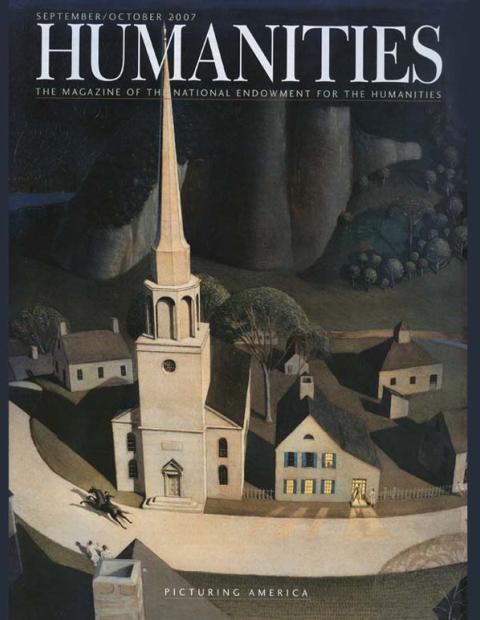THE SCENE WAS BASIC TRAINING, BUT THE BACKDROP WAS STRICTLY PALM TREES and orange groves for millions of American soldiers preparing to fight in World War II.
“Imagine you've spent your youth in Fargo, North Dakota,” says Gary Mormino, professor of history at the University of South Florida. "You come to Miami Beach and what you see is all these troops training on golf courses. And the barracks is the Black Stone Hotel in the Art Deco District of Miami Beach." This, Mormino says, is how the Sunshine State cast its spell on a generation. “They all pledged to return. And they would, as transplants, as retirees, as tourists.”
Over the next fifty years, the population boom that began with World War II transformed the southern state from a sleepy backwater of three million to an international mecca of more than eighteen million. The economic, social, and environmental effects of this starry-eyed stampede are the subject of The Florida Dream, a documentary sponsored by the Florida Humanities Council, which is airing on Florida Public Television on October 14. The film is based on Mormino's 2005 book, Land of Sunshine, State of Dreams.
The Florida that Mother Nature provided was not quite tenant-ready when millions of returning soldiers prepared to finance new homes through the GI Bill. Air conditioning, exhaustive dredging of the coasts, and savvy marketing would be needed to transform Florida from a tropical wild into a picture of postwar domesticity.
“The heat was pretty unbearable,” recalls Thomas C. Wilcox, a former Army Air Corps private who attended gunnery school in Fort Myers in 1943. “We did a lot of perspiring.” Initially viewed as a luxury, air conditioning became a competitive necessity for hotels in Miami by 1955. Wilcox says he would not have considered vacationing in Florida until AC came along, but he did so afterward, finally retiring there in 1980.
The city Wilcox chose for retirement, Cape Coral, did not exist in 1950. It had to be invented. An “instant city,” Cape Coral was envisioned as a sprawling matrix of canals that would make the dream of waterfront property come true even for those living miles inland. It was the brainchild of developers Leonard and Julius Rosen, who used aggressive salesmanship and the image-making power of the national media to turn an uninhabited peninsula on the Gulf Coast into the largest city in southwest Florida.
Before the first model homes were built, the Rosens began a massive advertising blitz. They took out ads on TV and in tabloids, gave away imaginary homes on The Price Is Right, and flew in prospective buyers for free getaways. Here, boiler-room tactics took over. Salesmen bugged rooms to spy on clients and, in the event that a buyer “forgot” his checkbook, kept blank checks from every bank in the nation on hand.
For all the marketing schemes and development bravado that went into making the Florida Dream, the deciding factor was price. Although Florida had long been an icon of easy living, it was a lifestyle accessible only to the middle and upper classes. In the burst of upward mobility after World War II, however, a car, house, and vacation were suddenly within reach. “A retired mailman could move here from Chicago and live on the water,” Mormino says. “Florida was a dream state for the working class.”
Archival film from the 1950s and '60s, used throughout the documentary, advertises the comfort and ease of the Florida lifestyle. A clarinet warbles in the background as a water skier zooms past, waving to neighbors. A man grilling poolside flips a massive steak. Later, a row of houses is pictured, and the sale price quoted could be the cost of a one-week rental today. Florida Dream producer Larry Elliston says it's no surprise that Florida exploded the way it did. “You can't fault people for wanting to come here, because it is sunshine, and saltwater, and good health, and rejuvenation. Life is good here.”

